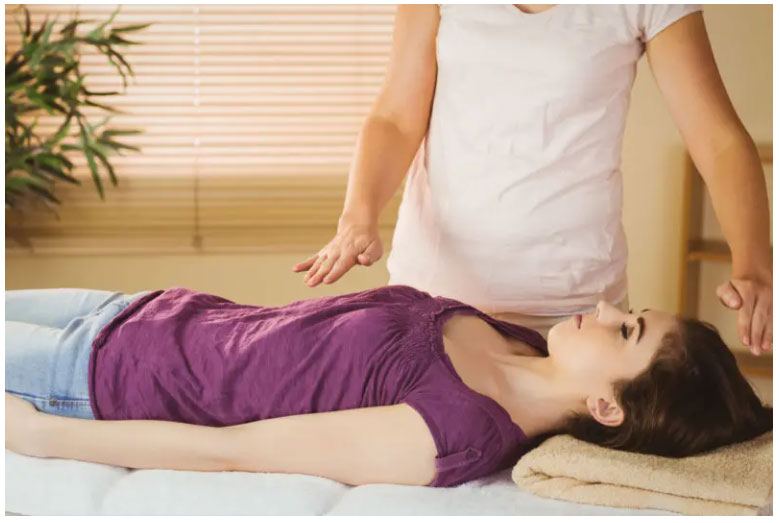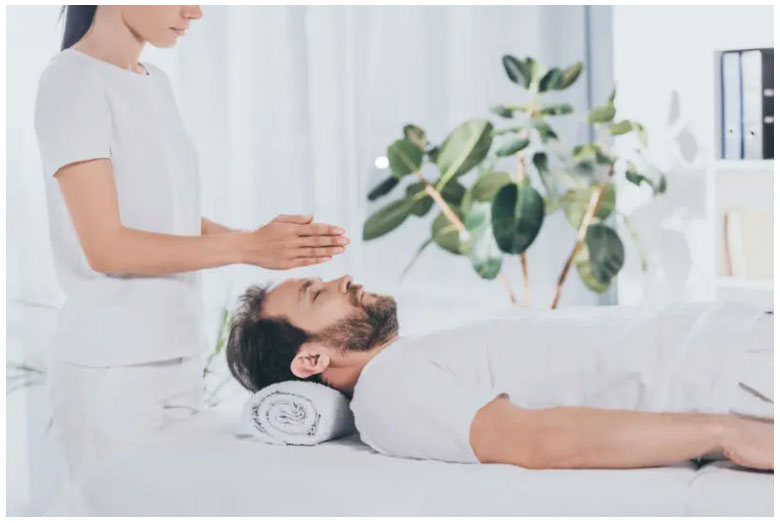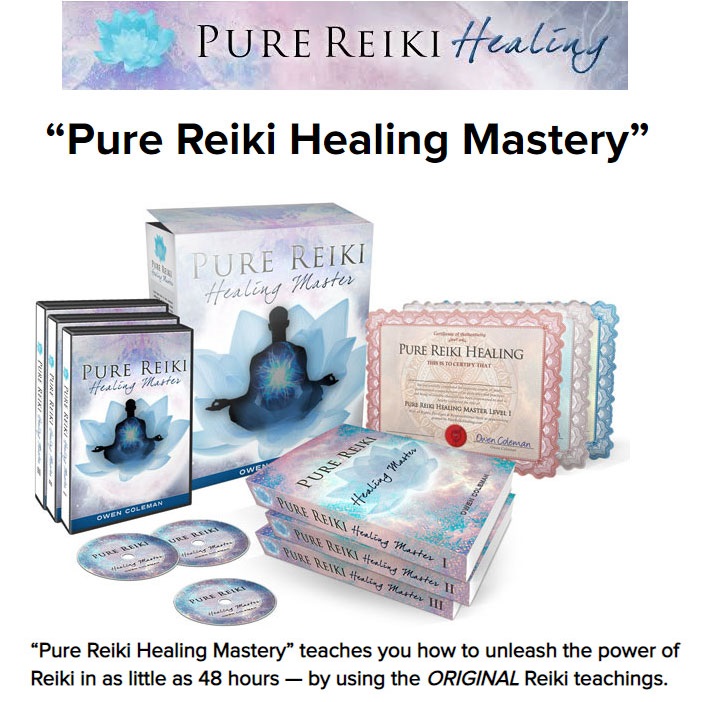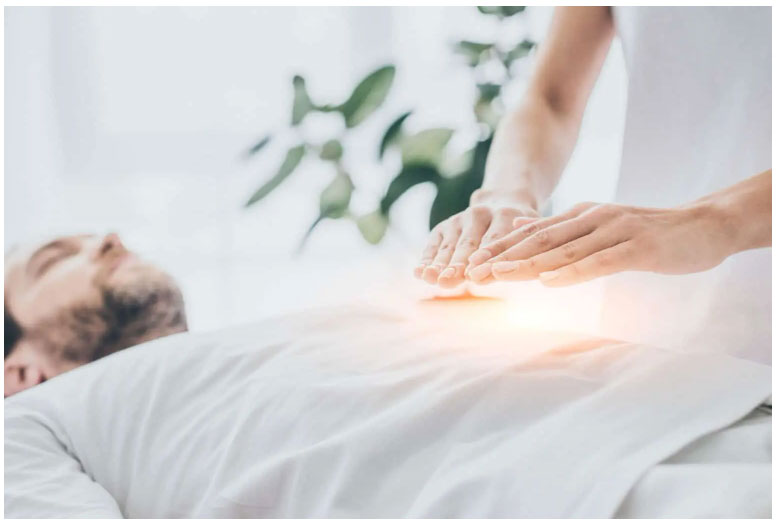Reiki massage
What is Reiki and what are its benefits? A Japanese therapeutic alternative, Reiki is an unconventional healing method in the same form as Tai Chi. Using meditation and relaxation, this therapy is based on an energetic approach that releases a feeling of well-being, but also of healing. Possessing many benefits, Reiki is more than a treatment. It is also a life therapy. Explanations.
What is Reiki?
Reiki is an alternative therapy that comes straight from Japan. In Japanese, the word "Rei" means universal, while the word "Ki" or "Qi" means vital energy that circulates in every human being. Reiki is therefore considered as a method of putting the vital and universal energy back into a person's body in order to provide perfect healing.
In general, it is a natural method that helps to rebalance and harmonize the body's energy centers in order to improve health and especially to prevent certain diseases.
This therapy is based on energetic care, which uses the body's energy. Indeed, during a Reiki session, a practitioner transfers universal energy from the palms of his hands to the patient. To do so, he relies on the patient's vibratory field. Like Tai Chi, Qi Gong or Aikido, Reiki releases all the tensions blocked in the body and mind. Reiki can take several forms, depending on the practitioner.
History and origin of Reiki
Reiki may have existed for thousands of years. But its most widespread form appeared in 1922. It was the Japanese meditation master Mikao Usui (1865-1922) who developed it during his Satori experience. It is an ancient practice derived from Zen Buddhism. Alas, the Japanese master died 4 years later, leaving this experience at an early stage, not having had time to be well conducted.
Fortunately, he was able to transmit the few essential principles of the therapy to his disciples. This is how Chujiro Hayashi introduced Reiki to the West. The latter would have received his master's authorization to perpetuate the discipline. He then created a clinic that relies on the Reiki technique as its main healing method.
A little later, Reiki was exported to the United States through Hawaiian practitioners. The West also discovered it through Mrs. Hawayo Takata and her granddaughter Phyllis Lei Furomoto, who transmitted the fundamental principles of the practice, around the 1970s. Takata would have been treated in the clinic founded by Hayashi. Satisfied with her healing, she decided to study Reiki with Master Hayashi and then found her own clinic in Hawaii. She also taught the practice to 22 masters there before she died in 1980.

Evolution of Reiki
Today's Reiki takes many forms. In addition to the natural healing of the Usui system, there are also the forms of modern Reiki initiated by Takata, the Komyo Reiki which succeeds Hayashi Reiki, the Jikiden Reiki, the Usui Teate or the Gendai Reiki, which come from many modern schools and currents of this therapeutic art. Reiki can also take the form of tantra healing in Tibetan Buddhism or Ayurveda in Hinduism.
The principles of Reiki
The principle of Reiki is based on an energetic approach that solicits the patient's vibratory field. Whoever practices it, must have a certain experience.
The practitioner channels vital and universal energy through esoteric symbols and sacred sounds. He then transmits this energy by placing the palms of his hands on the parts of the patient's body to be treated.
According to the principle of Reiki, there is no need to place the hand or to be in contact with the patient to transfer the energy. The transmission can even take place at a distance. Reiki believes that universal energy is endowed with a special intelligence and knows how to direct it exactly to the person who most needs the therapy. During the session, the practitioner's personal energy must not be transferred to the patient. The practitioner, like the patient, uses meditation and concentration.

A spiritual dimension
In addition to the therapeutic practice, Reiki also has a spiritual approach. According to the ancient form of Usui Reiki, healing is done through the laying on of hands as well as the use of various secret phenomena or symbols. But with the evolution of Reiki, the spiritual dimension has been removed from the method. Everything related to the mysticism of Reiki has been dissociated from the practice.
In any case, the main goal of Reiki is to relieve suffering, to bring moral and mental calm, inner peace and a feeling of well-being. Some practitioners may also associate Reiki with the body's chakras, but also with other elements such as acupuncture or Shiatsu.
How to become a practitioner?
To become a practitioner, you must receive an initiation by a Reiki Usui master teacher. During this initiation, the amateur receives an initiatory ritual also called harmonization. During the ritual, the apprentice has to study certain symbols and receives a process of energy balancing. He will thus be awakened and stimulated.
The 5 principles of Reiki Usui
According to Master Miikao Usui, there are 5 principles of Reiki Usui. In particular, it consists in carrying out the following main lines every day :
• Do not get angry
• Don't worry about anything
• Be filled with gratitude
• Fulfill your duty with vigilance
• Be kind to others and to yourself.
The realization of these great principles of Reiki Usui contributes to the blossoming of the self, the deployment of the vital force and the attainment of universal energy.
Symbols of Reiki
The origin of Reiki symbols is quite controversial. However, the Usui school used symbols that would be linked to four lines of sounds and four Chinese-Japanese ideograms that are used to transmit vital energy, but also to treat patients. The four major sounds and ideograms are :
• The Chokurei, this one takes the form of a spiral, which is often used during an imperial rite.
• The Seiheki: this one takes the form of a letter of the Tibetan Sanskrit "Ah" slightly deformed,
• Honshazeshonen and Daikomyô are common ideograms. The first designates the return to the source while the second evokes the stars (polar star, moon, sun) but also the Emperor.
What happens during a Reiki session?
The aim of a Reiki session is to be as relaxing and pleasant as possible, in order to provide a feeling of well-being to the person being treated. It is important to note that Reiki only acts according to the energetic needs of the person. The patient absorbs only the energy he or she needs, so there is no risk of having too much or not enough.
A session lasts about 60 to 90 minutes depending on the needs. The therapy is performed on a massage table. The patient must rest and get completely comfortable. He or she can decide whether or not there should be contact. The practitioner's hands do not need to touch the patient. The session continues with different positions of the hand, from head to feet.
If hand contact is present, you may feel slight pressure during the session. A warming or tingling sensation may also be felt. At the end of the session, the patient comes out of it invigorated and especially relaxed.
During the session, the practitioner may light a candle, incense or put on soft and relaxing music.

Distance Therapy
In the case of a remote Reiki session, it is necessary to fix the date and time with the practitioner, the person receiving the energy care must be in a calm place and far from any agitation. He or she can relax on the bed or on a chair. The important thing is to be completely comfortable. It is also possible to send music or light a candle and start with a meditation session. Depending on the belief, the person to be treated may say a prayer.
What are the benefits of Reiki?
The benefits of Reiki on health are numerous. Above all, it is used to release all tensions, physical or emotional blockages, but also to tone the body. It helps you to relax perfectly and provides general well-being. This is why it is recommended in the treatment of several physical or psychological illnesses.
It fights against stress and depressive disorders.
Reiki is used to calm down episodes of stress, anxiety, or mood disorders. It helps the body to create an environment conducive to well-being and inner peace. It can be used at the time of surgery, in retirement homes or in homes that treat depressive disorders. It is also effective in treating depression in the elderly. In addition, it can also fight against temporary or deep fatigue in sensitive people.
It improves the quality of life of people with cancer.
Living with cancer is a life of physical pain, but also emotional pain. With treatment, fatigue, pain, having cancer can quickly become an ordeal. Reiki then intervenes to soothe tensions, calm anxieties but above all to restore the dynamism and universal energy that the body needs to recharge itself. It helps to reinvigorate people with cancer, with the aim of having a better quality of life.
It improves the quality of life of the elderly
Reiki is also recommended for elderly people with mild memory loss or Alzheimer's disease. It improves mental function and allows the elderly to stimulate their brain to preserve them from this type of disease. In addition, some studies have also shown that Reiki can help improve concentration problems. Meditation practices help patients to concentrate better.
It reduces pain
Energy therapy from Reiki can reduce pain. Whether it is a physical pain or a moral pain, Reiki helps to focus on healing and can completely replace an analgesic. It is recommended before extracting a tooth or before surgery.
It helps you recover from a stroke.
Several clinical trials have shown that Reiki can help a patient recover and recuperate from a stroke. It can provide the vital energy to get a person back on his or her feet. In all cases, it also protects the heart from all heart problems.
It boosts the immune system
For people who lack immune defense, Reiki is perfectly adapted to improve the immune system. In this way, it helps to avoid all dysfunctions or diseases of the system such as Crohn's disease. It brings the necessary energy to revitalize the body, but also all the organs.
It improves personal development
As part of long-term therapy, reiki can improve the patient's personal development. Because it releases sensational energy and a sense of well-being, reiki also helps with self-fulfillment and self-actualization. The positive energy it transmits brings joy, peace and serenity. This can push the treated person to develop more self-esteem and self-confidence.

It allows to recover after a trauma
After a trauma, recovery can often be difficult and lengthy. Reiki can provide the vital force necessary to recover quickly, but also to avoid giving up again. In addition, Reiki helps to focus on healing and not to get distracted, to dwell on the trauma. It is also a work of mental energy.
It is effective in treating women's disorders
Some studies show that Reiki can be used to treat infertility or reproductive difficulties in women. Since this therapy aims to re-energize a person, to stimulate his or her vital energy, it can be very effective in launching the fertility and procreation machine in women. People with uterine cancer or breast cancer can also use Reiki as a pain healing therapy.
Other benefits of reiki
In addition, reiki can also be beneficial in treating certain diseases or disorders such as :
• Neurodegenerative diseases
• Behavioural disorders, autism, hyperactivity
• Chronic pain
• Physical and emotional imbalances
It also eliminates toxins and impurities in the body. It optimizes the effectiveness of a medical treatment, but above all it accelerates all healing work, whether physical or emotional.
Conclusion on Reiki
Reiki is an ancient practice that evolves over time. With its therapeutic virtues, it allows to re-harmonize the energetic balance of any living being. It also acts on animals, plants, the environment and the entire planet.


